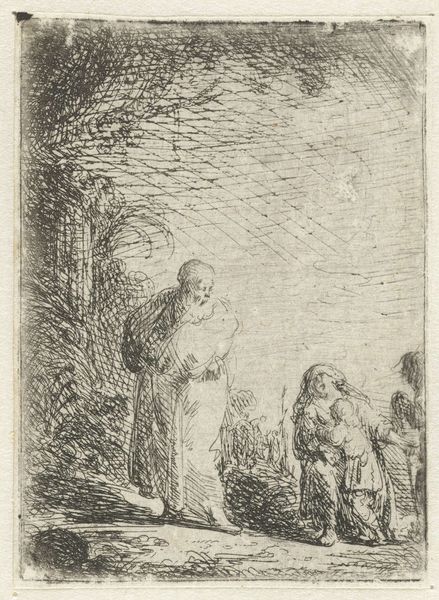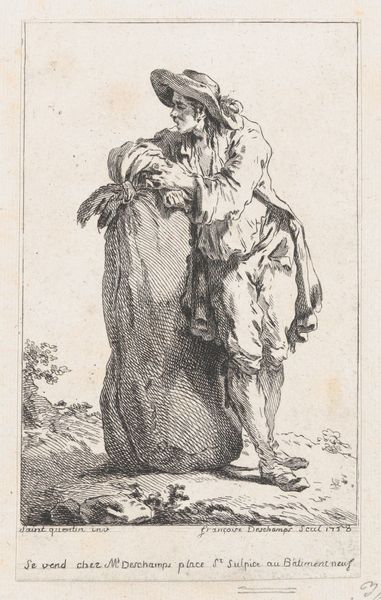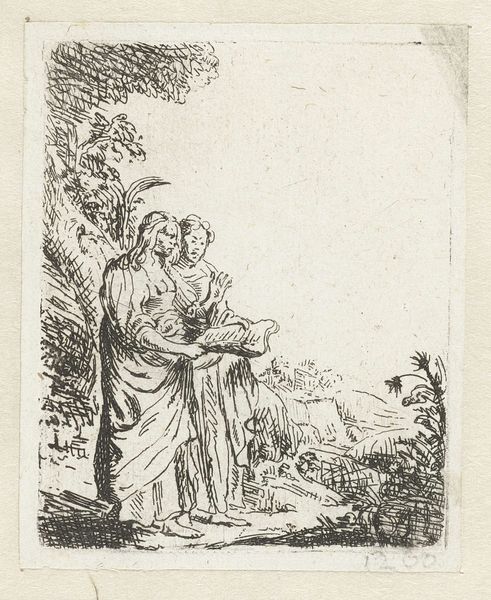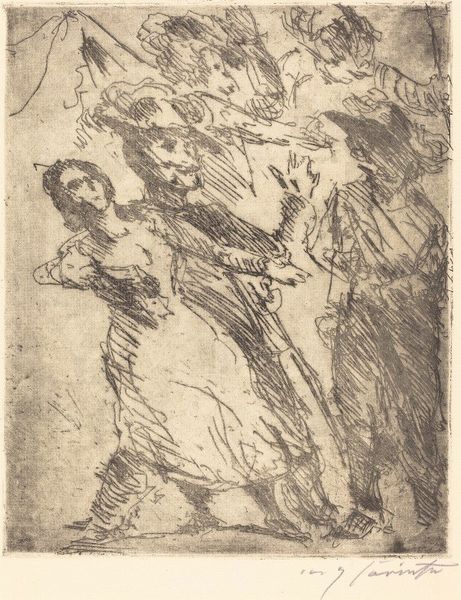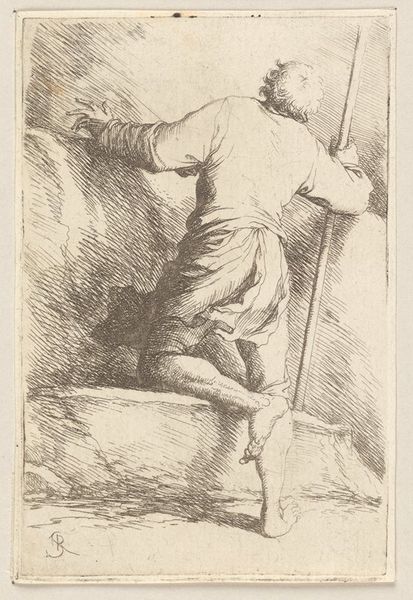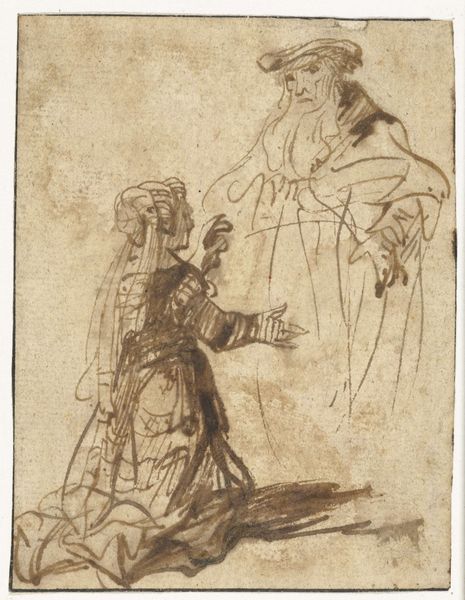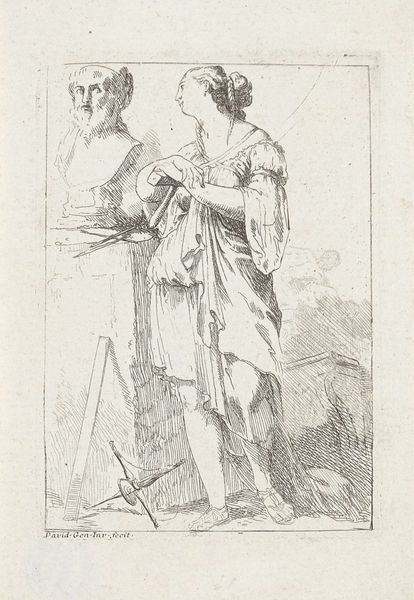
Copyright: National Gallery of Art: CC0 1.0
Curator: Welcome. We are standing before Augustus John’s etching, "Fruit Sellers - E," created in 1906. What are your initial thoughts on this composition? Editor: It evokes a sense of quiet determination, almost resilience, wouldn't you say? The figures, rendered in these quick, almost fleeting lines, seem grounded despite the ephemerality of the print. They make me wonder about the societal expectations weighing on these women. Curator: It's interesting you pick up on that. I'm struck by how John uses the etching medium – the intricate web of lines, the way the light catches and releases – to suggest layers of meaning. There’s something enduring in the archetype of the "fruit seller". Think of the apple, a long standing symbol of knowledge, temptation, sustenance. It connects these figures to centuries of female vendors represented in art. Editor: Exactly! And to push it a bit further, thinking about gendered labour... Are these women selling fruit by choice, or by necessity? The lack of adornment suggests a specific economic reality. We need to acknowledge that the pastoral imagery might mask more complex narratives around labour and poverty. What seems 'genre' is intrinsically tied to the marginal conditions in which women had to negotiate their social role. Curator: That’s a crucial perspective. John was moving among artistic circles known to romanticise and essentialise Gypsy women figures at the time. However, in many cultures fruits embody not only sustenance but also femininity. In which ways do the depicted basket and light robes contrast against the rough environment of this composition? Editor: The fragility is very evident in these characters, but their gaze is one of pride. This reinforces my earlier point about resilience. This image is doing more than presenting an impressionist portrait. I feel like it speaks of struggle but also the strength found in communal activity, and the strategies they employed to get by. Curator: Food for thought. Perhaps, by stripping down to essentials, John is trying to highlight the quiet dignity of everyday labor. Editor: I think that there is a risk of romanticising in this image, but thinking about how the art interacts with real social contexts allows us to perceive beyond an impressionist snapshot. Curator: Yes, by looking deeper, one might discover complex narratives intertwined. It provides another avenue into our ongoing understanding of social status as they appear within portraiture through the centuries.
Comments
No comments
Be the first to comment and join the conversation on the ultimate creative platform.




